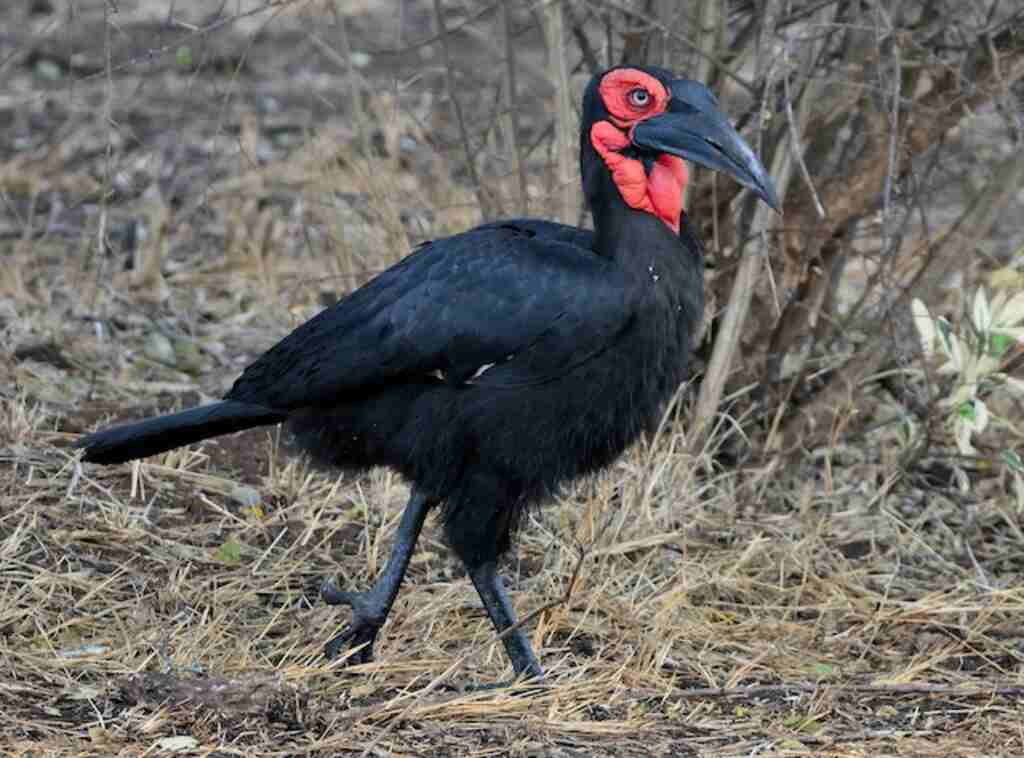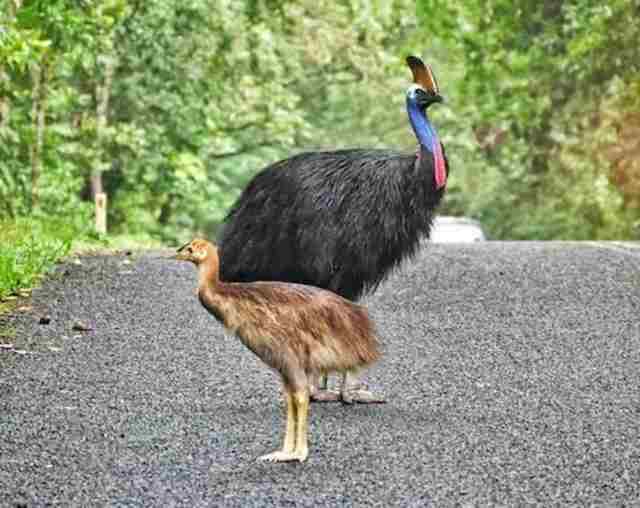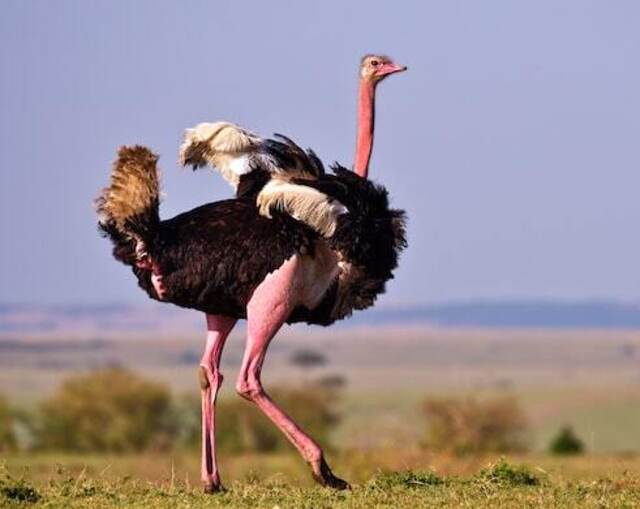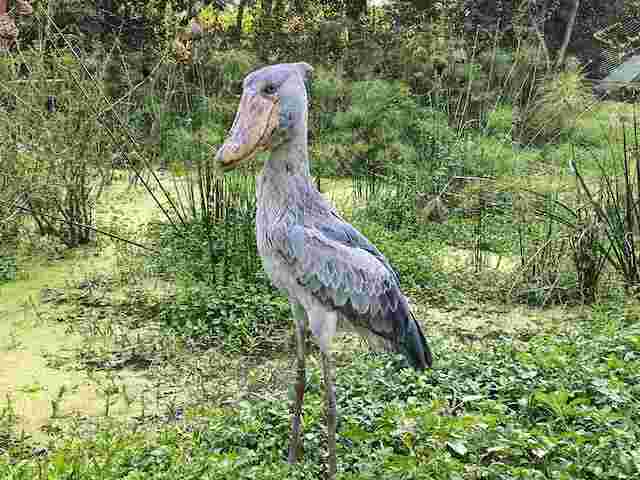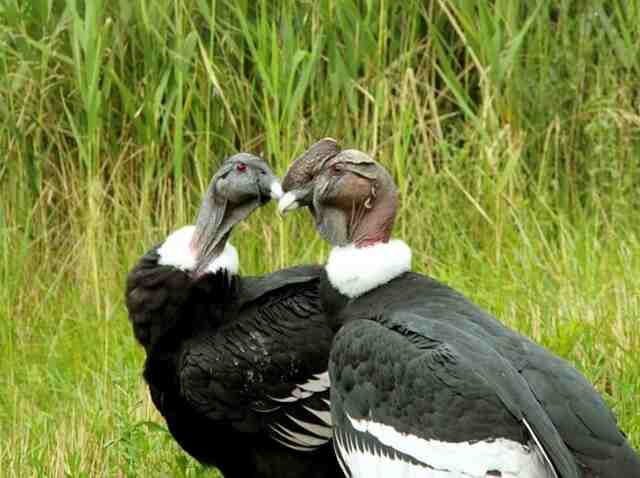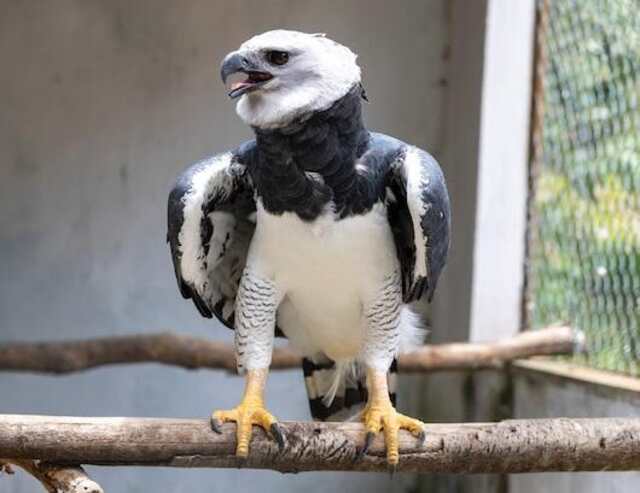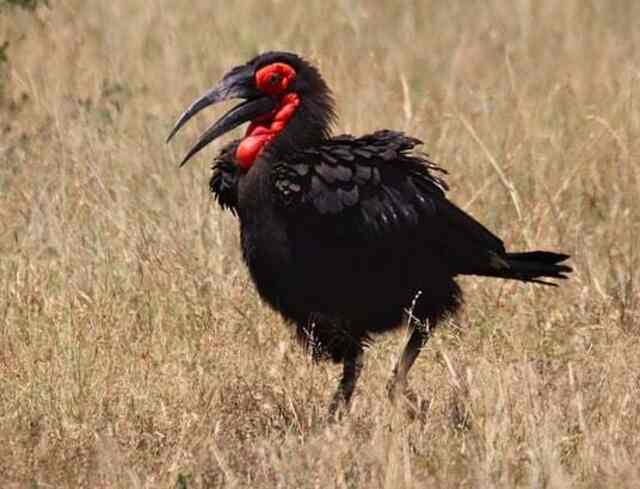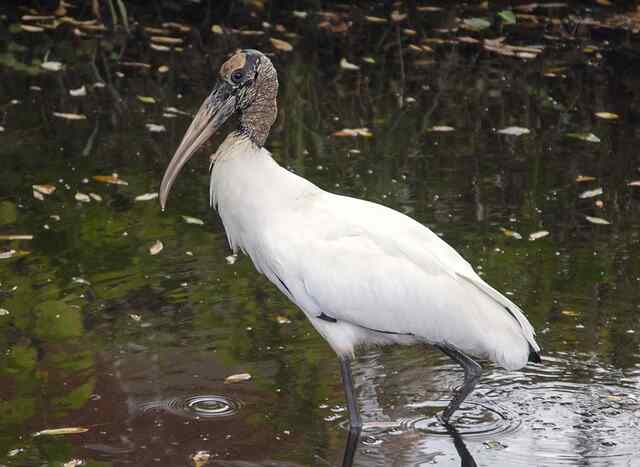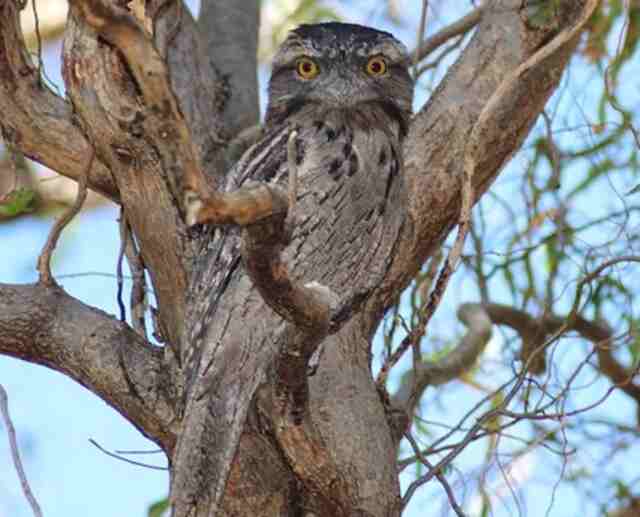Travel back in time with us as we explore the mind-blowing link between birds and dinosaurs. From razor-sharp claws to scaly skin, some birds look like they were plucked straight from the Jurassic era. But how did these prehistoric creatures evolve into the feathered friends we know and love today?
Join us on a journey of discovery as we delve into the incredible world of bird evolution. From the fearsome terror bird to the flamboyant shoebill, we’ll introduce you to 10 birds that look like they stepped right out of a dinosaur movie. Get ready for a dino-mite adventure!
Table of Contents
- 1 Birds That Look Like Dinosaurs
- 1.1 Cassowary – A Living Dinosaur?
- 1.2 Ostrich: Strutting Through Time
- 1.3 Shoebill: A Dino-sized Beak
- 1.4 Secretary Bird: The Stalker from the Past
- 1.5 Emu: The Australian Avian
- 1.6 Andean Condor: A Majestic Survivor
- 1.7 Harpy Eagle: The King of the Skies
- 1.8 Southern Ground Hornbill: A Dinosaur’s Caw
- 1.9 American Wood Stork: A Unique Survivor
- 1.10 Tawny Frogmouth: The Camouflaged Night Hunter
- 1.11 Hoatzin: The Dinosaur Bird of the Amazon Rainforest
- 2 Frequently Asked Questions
- 3 Conclusion
- 4 Author
Birds That Look Like Dinosaurs
Cassowary – A Living Dinosaur?
With its striking blue head and dagger-like claws, the cassowary is one of the most recognizable birds that look like dinosaurs. This flightless bird, found in the tropical forests of New Guinea and Australia, stands over five feet tall and weighs up to 130 pounds. Its sharp beak and powerful legs make it a formidable creature to encounter in the wild.
But it’s not just its appearance that makes the cassowary seem like a living dinosaur. Scientists believe that this bird’s closest living relative is the velociraptor, a ferocious predator that lived over 70 million years ago. Like the velociraptor, the cassowary has sharp claws on its feet and a keen sense of smell to track prey.
Did you know that the cassowary is also an important seed disperser in its ecosystem? It eats a variety of fruits and plants, digesting the seeds and spreading them throughout the forest. Unfortunately, habitat loss and hunting have made the cassowary an endangered species. So let’s appreciate this living dinosaur while we still can!
Ostrich: Strutting Through Time
Behold the mighty ostrich, a modern-day bird that’s been strutting through time since the dinosaur era. With their long, powerful legs and hefty bodies, these flightless birds are like living, breathing time capsules of prehistory. In fact, some scientists believe that ostriches are the closest living relatives to the fearsome velociraptor, with their sharp claws and powerful leg muscles.
But ostriches are more than just living dinosaurs. These fascinating creatures have a range that spans the African continent, from the savannas of Tanzania to the deserts of Namibia. They’re also incredibly adaptable, with a diet that includes everything from grass and leaves to insects and small animals.
And did you know that ostriches can run up to 70 km/h (45 mph)? That’s faster than some of the cars on the highway! So the next time you see an ostrich, take a moment to appreciate this incredible bird and its place in the history of our planet.
Read more: Which bird has a brain smaller than either of its eyeballs?
Shoebill: A Dino-sized Beak
The shoebill, also known as the “whale-headed stork,” is a bird that looks like it could have come straight from the Cretaceous period. Its massive, curved bill resembles that of a pterodactyl, and its overall appearance is reminiscent of a prehistoric creature. With its towering height of up to 5 feet and its ominous gaze, the shoebill is truly a sight to behold.
Despite its fierce appearance, the shoebill is a mostly solitary bird that lives in the swamps and marshes of East Africa. Its diet consists mainly of fish, but it has been known to eat reptiles and even small mammals. Interestingly, the shoebill’s range is quite small, with most of the population residing in Sudan, Uganda, and Zambia.
But despite its limited range, this bird has captured the hearts of many with its unique appearance and quirky personality. So if you ever find yourself in East Africa, keep an eye out for the dino-sized beak of the incredible shoebill.
Secretary Bird: The Stalker from the Past
The Secretary Bird is a fascinating creature that bears a striking resemblance to some of its prehistoric ancestors. With its long legs, powerful beak, and piercing gaze, this bird looks like it could have roamed the earth alongside the dinosaurs. In fact, many experts believe that the Secretary Bird’s dinosaur counterpart would have been the fearsome velociraptor.
But this bird is much more than just a lookalike. Found across sub-Saharan Africa, the Secretary Bird is known for its distinctive hunting style, which involves stalking their prey on foot and stomping prey to death with its powerful feet. This bird is also a master of disguise, blending seamlessly into its savanna habitat with its gray and black feathers.
Fun facts about the Secretary Bird include that it can reach up to 4 feet tall and has a wingspan of over 7 feet. It also feeds on a wide range of prey, from insects and rodents to snakes and even small mammals. So next time you’re in Africa, keep an eye out for this impressive bird that’s sure to make you feel like you’ve stepped back in time.
Emu: The Australian Avian
Let’s take a closer look at one of the birds that made our list of feathered dinosaurs: the emu. This flightless bird is a native of Australia and is the second-largest living bird in the world after the ostrich. With its long neck, beady eyes, and large, sturdy legs, the emu certainly has a unique appearance that could be compared to that of a dinosaur.
In fact, some paleontologists believe that the emu may have descended from a group of theropod dinosaurs that roamed the earth millions of years ago. Apart from its interesting appearance, the emu also has a fascinating range of behaviors and characteristics. It’s a fast runner and can reach speeds of up to 30 miles per hour, and it has a unique vocalization that sounds like a drum beat.
Emus are also adaptable creatures and can thrive in a range of habitats, from the dry outback to dense forests. They primarily feed on plants and insects, but will also eat small animals if food is scarce. With its distinct appearance and quirky traits, the emu truly is a unique avian species worth learning more about.
Andean Condor: A Majestic Survivor
The Andean Condor is a magnificent bird that looks like it was plucked straight from the age of dinosaurs. With a wingspan of up to 10 feet, it’s one of the largest flying birds in the world. But it’s not just the size that makes it stand out – its bald head and sharp beak are also reminiscent of its prehistoric ancestors. In fact, the Andean Condor shares many characteristics with the pterosaurs, the winged reptiles that flew the skies millions of years ago.
Despite facing threats from habitat loss and hunting, the Andean Condor has managed to survive and thrive in its range across the Andes Mountains. These impressive birds can fly for hours without flapping their wings and are known for their excellent eyesight.
They feed mainly on carrion, using their sharp beaks to tear meat from carcasses. Interestingly, Andean Condors are also known for their ability to use thermal currents to soar to incredible heights. With its ancient appearance and remarkable survival skills, the Andean Condor is truly a majestic survivor.
Read more: 18 Facts About The Andean Condor That Will Shock You
Harpy Eagle: The King of the Skies
Behold the majestic Harpy Eagle, ruler of the skies and a true dinosaur lookalike. With its piercing gaze, massive talons, and impressive wingspan of up to seven feet, this incredible bird is a sight to behold. Its striking appearance is reminiscent of a prehistoric predator, with feathers that resemble sharp scales and a ferocious beak that could tear through flesh with ease.
But don’t let its intimidating exterior fool you – the Harpy Eagle is a gentle giant at heart. In fact, it’s one of the largest and most powerful eagles in the world, capable of taking down prey that’s larger than itself. Found in the tropical forests of Central and South America, the Harpy Eagle’s range extends from Mexico to Argentina, where it preys on monkeys, sloths, and other small mammals.
Despite its fearsome reputation, the Harpy Eagle is a fascinating creature with many fun facts to discover. Did you know that it’s one of the few birds that builds its nest in the canopy of the rainforest, or that it has a unique feather pattern that allows it to blend in with the sky? With its impressive size and dinosaur-like appearance, the Harpy Eagle truly is the king of the skies.
Southern Ground Hornbill: A Dinosaur’s Caw
Meet the Southern Ground Hornbill, a bird that looks like it’s straight out of the Cretaceous period. With its large size, powerful beak, and striking black plumage, this avian giant exudes a prehistoric aura. Its dinosaur-like appearance is no coincidence, as it shares many characteristics with its long-extinct relatives.
From its heavy, muscular legs to its fierce gaze, the Southern Ground Hornbill resembles the mighty theropods of old. But don’t let its imposing appearance fool you – this bird is also full of surprises. Did you know that it has a unique vocalization that sounds like a dinosaur’s caw? Or that it forms lifelong bonds with its mate and offspring?
Found in the grasslands and savannas of sub-Saharan Africa, this magnificent bird is a true icon of the region. Keep an eye out for the Southern Ground Hornbill on your next African safari – you never know what kind of prehistoric encounter you might have!
American Wood Stork: A Unique Survivor
The American Wood Stork is truly a unique survivor, with its prehistoric appearance and remarkable characteristics. Standing tall at over three feet with a wingspan of up to five feet, it’s easy to see why this bird has often been compared to the dinosaur-era Pterodactyl. With its long, thick beak and bald, scaly head, the American Wood Stork certainly looks like it was plucked straight from the Mesozoic period.
But there’s more to this fascinating bird than just its appearance. Found primarily in wetlands throughout the southeastern United States, the American Wood Stork is an important indicator species of the health of these fragile ecosystems. It also has a unique feeding strategy, using its sensitive beak to detect vibrations from prey in shallow water.
Did you know that this endangered species is known to fly up to 50 miles to find suitable nesting sites? From its impressive wingspan to its intriguing behavior, the American Wood Stork is truly a one-of-a-kind bird that deserves our attention and admiration.
Tawny Frogmouth: The Camouflaged Night Hunter
Behold the Tawny Frogmouth, a master of disguise and a true night hunter. With its mottled plumage and wide, flat beak, this bird’s appearance is reminiscent of a small dinosaur. Its prehistoric looks are matched by its hunting style: sitting still for hours, waiting for prey to come within striking distance.
This elusive bird can be found throughout Australia, where it makes its home in forests, woodlands, and even suburban areas. But don’t be fooled by its sleepy demeanor – the Tawny Frogmouth is a fierce predator, feasting on insects, small mammals, and even other birds.But that’s not all – did you know that Tawny Frogmouths also have a unique vocalization?
Their call sounds like a low-pitched “oom-oom,” which can be heard echoing throughout their territory at night. This bird’s adaptability and bird-like behavior have made it a fascinating creature to study in today’s world. So next time you’re out at night, keep your eyes peeled for the Tawny Frogmouth, a true dinosaur in disguise.
Read more: 10 Birds That Sound Like Owls But Aren’t! (Updated 2023)
Hoatzin: The Dinosaur Bird of the Amazon Rainforest
The hoatzin, also known as the stinkbird, is a fascinating creature with distinct physical features that are reminiscent of a dinosaur. With its prehistoric crest and clawed wings, this bird looks like it could be a distant relative of the famous velociraptor. But despite its fierce appearance, the hoatzin is a gentle herbivore that feeds mainly on leaves and fruits.
Found primarily in the Amazon rainforest, the hoatzin is a master of the trees, nesting in the dense foliage and taking flight with ease. Though it has a limited range, this bird is a true survivor, adapting to the challenges of its environment with unique behaviors like fermenting its food in a specialized crop.
So next time you’re exploring the rainforest, keep an eye out for the hoatzin. This quirky bird is a true testament to the wonders of evolution and a living reminder of the dinosaurs that once roamed the earth.
Frequently Asked Questions
What is the most primitive bird that looks like a dinosaur?
The most primitive bird that looks like a dinosaur is the hoatzin, also known as the “stinkbird.” It is native to South America and is the only surviving species in the family Opisthocomidae.
Hoatzins have several characteristics that resemble those of dinosaurs, including their clawed wings, primitive digestive system, and ability to climb trees using their sharp claws.
In fact, hoatzin chicks have claws on their wings that they use to climb trees before they learn to fly. This unique bird has been called a “living fossil” due to its resemblance to ancient birds that lived over 60 million years ago.
What kind of bird looks the most like a non-avian dinosaur?
The cassowary is widely regarded as the bird that looks the most like a non-avian dinosaur. With its tall and bony casque, sharp claws, and striking blue head, this flightless bird resembles a living, breathing velociraptor.
But despite its intimidating appearance, the cassowary is a shy and elusive creature that prefers to stick to the dense rainforest underbrush, making it a true treasure for those lucky enough to catch a glimpse.
What bird looks like a pterodactyl?
The shoebill stork is often compared to a pterodactyl due to its large, curved bill and prehistoric appearance. Its sharp features and intense stare give it an almost otherworldly look, making it a true wonder to behold.
Though it may not be able to fly like its ancient doppelganger, the shoebill is a formidable hunter in its own right, with a powerful beak that can take down fish, snakes, and even small crocodiles.
So if you’re ever lucky enough to spot a shoebill stork in the wild, take a moment to appreciate its unique beauty and the legacy of the dinosaurs that came before it.
What is the blue bird that looks like a dinosaur?
The bird that is often referred to as resembling a dinosaur and is blue in color is actually the Great Blue Heron (Ardea herodias). It has a long, S-shaped neck, dagger-like bill, and distinctive blue-gray plumage, which can make it appear quite dinosaur-like.
The Great Blue Heron is found throughout much of North and Central America, and is typically found in wetland habitats such as swamps, marshes, and shores. They are skilled hunters, feeding on a variety of prey including fish, frogs, and small mammals.
Overall, the Great Blue Heron is a fascinating and impressive bird that has captured the imaginations of many with its unique appearance.
Conclusion
In conclusion, we hope that this journey through the world of birds that resemble dinosaurs has been both entertaining and enlightening. From the terrifying cassowary to the adorable kiwi, we’ve discovered a variety of birds with fascinating similarities to their prehistoric ancestors.
But what does it all mean? These bird species remind us that evolution is a complex and ongoing process, and that the traits and characteristics of ancient creatures can continue to shape life on Earth today. By studying these birds and their evolutionary history, we can gain a deeper understanding of the natural world and our place in it.
If you’re interested in learning more about these birds and their dinosaur connections, there are many resources available online and in your local library. From scientific studies to popular documentaries, there’s no shortage of information to explore. So go forth, bird lovers, and continue to discover the wonders of the avian world.
Related Post: Are Birds Mammals? Discover the Fascinating Truth!

